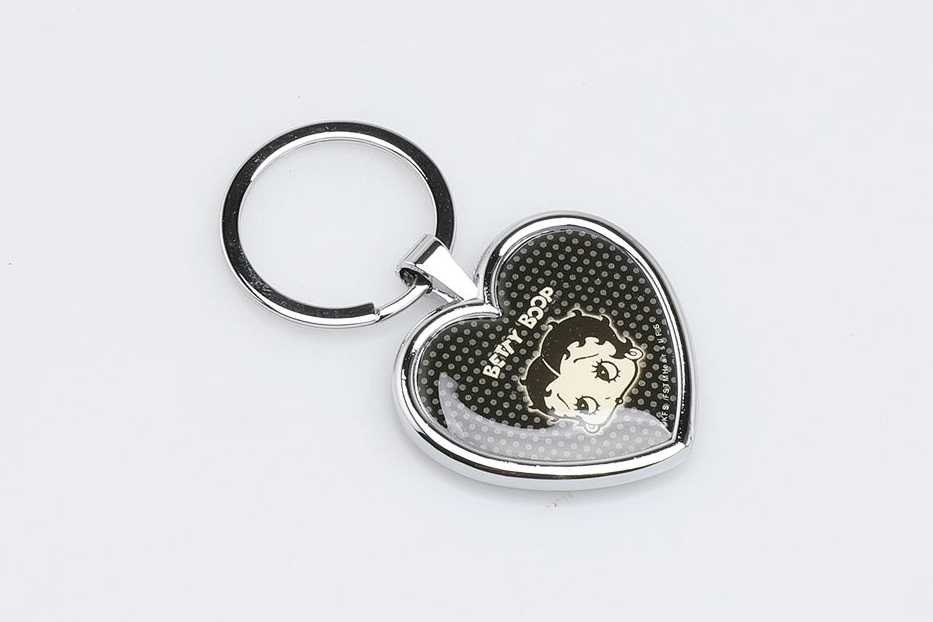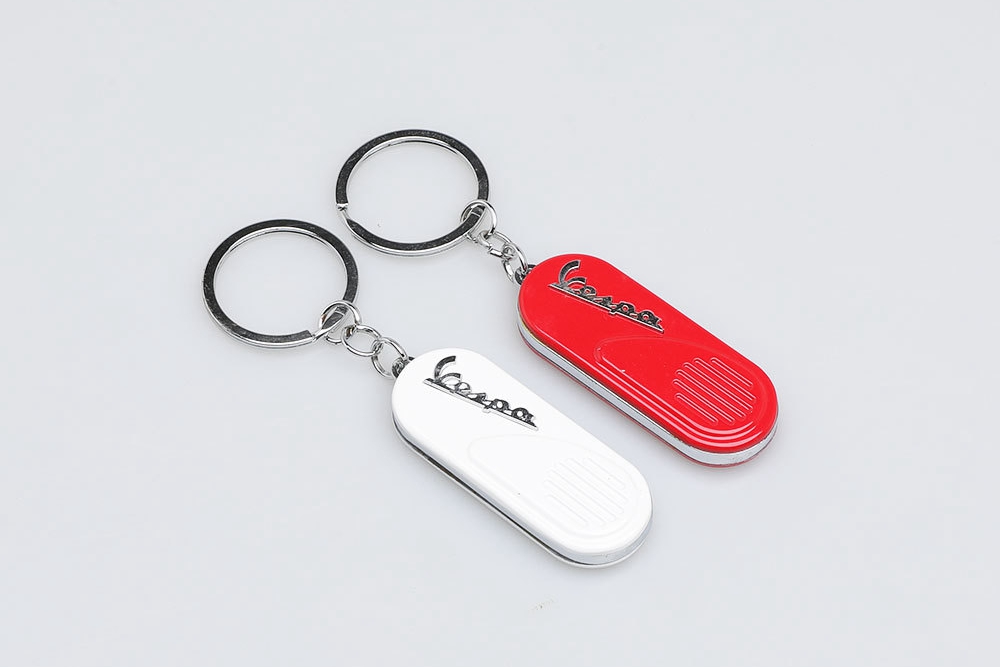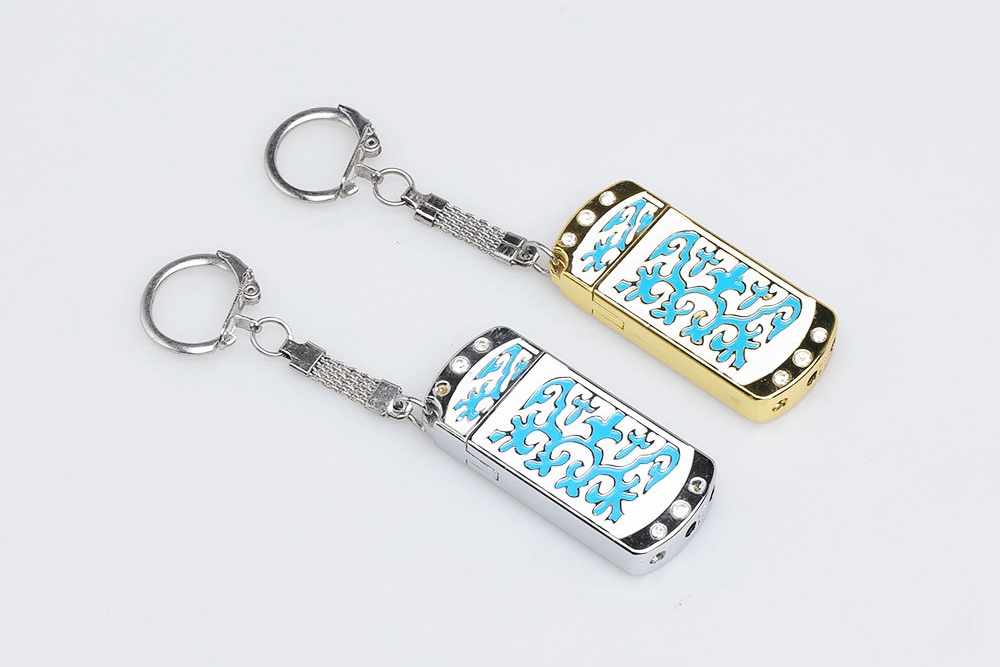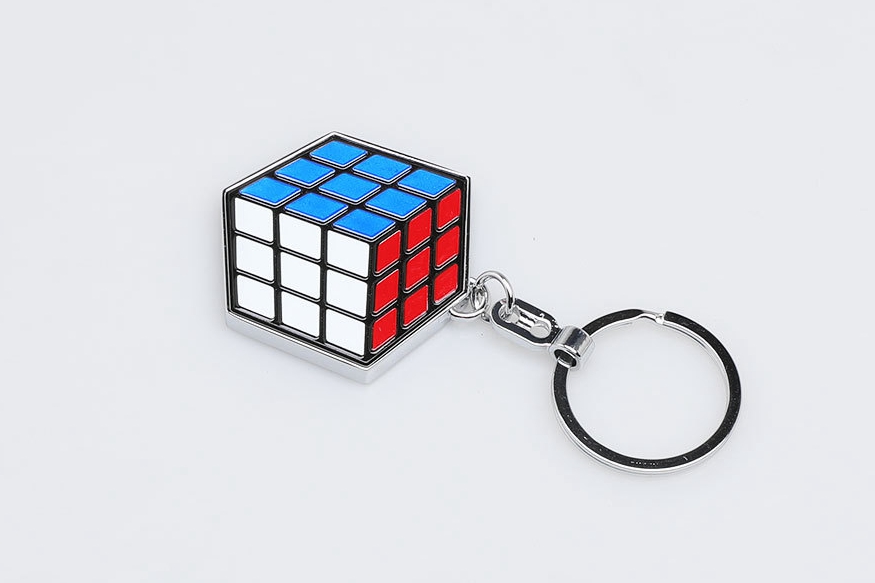Key Chain Accessories Manufacturing: Metal Injection Molding and Zinc Die Casting
Key Chain Accessories Manufacturing
Neway employs precision manufacturing processes such as Metal Injection Molding (MIM) and Zinc Alloy Die Casting to manufacture keychains, ensuring high-quality and durable products.
In Metal Injection Molding (MIM), a fine metal powder is mixed with a binder material to form a feedstock. This mixture is then injection molded into the desired shape using specialized molds. After molding, the part undergoes a debinding process to remove the binder, followed by sintering to achieve the final metal structure. This process ensures precise details and excellent material properties for keychain production.
Additionally, Neway utilizes Zinc Alloy Die Casting for keychain manufacturing. In this process, molten zinc alloy is injected into a die cavity under high pressure, creating intricate and accurate keychain designs. The rapid cooling and solidification result in a robust final product with tight tolerances.
The MIM process can produce keychains made of stainless steel and other materials, which are corrosion-resistant, scratch-resistant, durable, and beautiful after surface treatment, such as polishing and PVD—mainly used to manufacture high-end keychains. Zinc die-cast keychains are always used in mid-end products.
Manufacturing methods in Achieving Quality Key Chain
The choice of manufacturing methods significantly influences the quality of products, especially in the case of keychain production at Neway. Metal Injection Molding (MIM) and Zinc Alloy Die Casting are pivotal precision manufacturing processes employed to ensure the creation of high-quality and durable keychains.
In Metal Injection Molding, the meticulous combination of fine metal powder and a binder material forms a feedstock. This mixture is precisely injection molded into the desired shape using specialized molds. The subsequent debinding process removes the binder, and sintering is employed to achieve the final metal structure. This intricate process guarantees precise details and excellent material properties, contributing to the overall quality of the keychains.
Furthermore, Zinc Alloy Die Casting plays a crucial role in ensuring the accuracy and intricacy of keychain designs. The injection of molten zinc alloy into a die cavity under high pressure, followed by rapid cooling and solidification, results in a robust final product with tight tolerances. This process enhances the durability and structural integrity of the keychains.
The significance of these manufacturing methods extends beyond mere production processes. For instance, the MIM process facilitates the creation of keychains made of stainless steel and other materials known for their corrosion resistance, scratch resistance, and overall durability. These keychains maintain durability and exhibit a beautiful finish through surface treatments such as polishing and PVD. This makes them particularly suitable for high-end keychain applications.
On the other hand, Zinc Alloy Die Casting is employed for mid-end keychain products, offering a balance between precision and cost-effectiveness. The meticulous control over the die-casting process ensures that the final keychains meet tight tolerances, contributing to their quality.
In essence, the importance of these manufacturing methods lies in their ability to deliver keychains with superior material properties, precise details, and the necessary durability for varying market segments, ultimately positioning Neway as a leader in producing high-quality keychains.
Metal Injection Molding (MIM) In Keychain Manufacturing
Metal Injection Molding (MIM) stands as a pivotal precision manufacturing method utilized by Neway in crafting intricate metal parts, including keychains, with unparalleled precision and material properties.

MIM involves a meticulous process wherein fine metal powders are mixed with a binder material to create a feedstock. This mixture is precisely injected into specialized molds to form the desired shape of the part. Following molding, a critical step involves the removal of the binder through a debinding process, leaving behind the compacted metal structure. The subsequent sintering occurs at high temperatures, where the metal particles are fused, resulting in a final part with exceptional material properties and structural integrity.
The beauty of MIM lies in its capability to produce complex and detailed shapes with delicate features, ensuring precise dimensions and intricate designs, ideal for applications like crafting high-end keychains. The process guarantees tight tolerances and excellent surface finish, offering corrosion resistance, scratch resistance, and durability to the final products.
Neway harnesses MIM's capabilities to create keychains from materials like stainless steel, ensuring physical robustness and aesthetic appeal through surface treatments such as polishing and PVD. This method elevates the quality of keychains, making them highly sought-after for their durability and elegance in the market.
Advantages of MIM in Keychain Production
Metal Injection Molding (MIM) offers several advantages in keychain production, making it an efficient and cost-effective method. Here are the key benefits:
Enhanced Design Freedom: MIM's capability to handle intricate designs exceeds geometrical complexity. It allows for the integration of fine details, logos, and text, enhancing the visual appeal of keychains. For instance, Neway can leverage this feature to produce branded keychains with intricate company logos or product details.
Cost Savings Through Material Efficiency: Finely powdered metal is mixed with a binder in the MIM process, creating a precisely molded feedstock. It significantly reduces material wastage compared to traditional methods. Neway can highlight the cost efficiency of MIM by quantifying material savings, such as a percentage reduction in raw material costs.
Material Selection for Durability: The versatility of materials in MIM allows Neway to choose alloys that offer superior durability and performance. Stainless steel, for instance, provides corrosion resistance, making it ideal for keychains subjected to various environmental conditions.
Tight Tolerances for Precision: MIM boasts impressive tolerance capabilities, with values as tight as ±0.003 inches. This precision is crucial for ensuring that every keychain produced meets the specified dimensions accurately, contributing to a high-quality end product.
Quality Assurance through Process Control: Neway can emphasize the stringent process controls employed in MIM, highlighting the consistency achieved in every batch. This level of control ensures that each keychain meets the desired standards, reinforcing Neway's commitment to delivering top-notch products.

Reduced Machining Steps: MIM streamlines the production process by minimizing the need for secondary operations like machining. It reduces costs and accelerates the time-to-market for keychains, addressing the growing demand for quick turnarounds in the promotional products industry.
Environmental Sustainability: Neway can underscore the environmental benefits of MIM, such as reduced material waste and energy consumption compared to traditional manufacturing methods. It aligns with the growing emphasis on sustainable practices in the industry.
In conclusion, Metal Injection Molding emerges as a versatile and efficient solution for keychain production, offering a perfect blend of design flexibility, cost-effectiveness, and material performance. Neway's utilization of MIM positions them as an industry leader capable of delivering high-quality, precision-crafted keychains to their clientele.
Zinc Die Casting In Keychain Manufacturing
Zinc die casting plays a pivotal role in the efficient and precise manufacturing of keychains, showcasing Neway's expertise in custom parts production. The process involves injecting molten zinc into a precision mold, delivering intricate designs with tight tolerances.
One notable advantage of zinc die casting for keychains is its exceptional dimensional accuracy, with tolerances reaching ±0.02mm. It ensures that each keychain aligns seamlessly with the intended design, reflecting Neway's commitment to precision engineering.
Moreover, zinc's inherent strength and durability make it an ideal material for keychain manufacturing. The die-cast keychains boast a high tensile strength of approximately 320 MPa, ensuring longevity and resistance to wear and tear – a testament to Neway's dedication to quality.
The efficiency of the die-casting process further enhances Neway's production capabilities. With a cycle time as low as 15 seconds per keychain, Neway achieves a remarkable output of up to 2,400 pieces per hour. It meets and exceeds industry standards, showcasing Neway's commitment to delivering custom parts quickly and precisely.
Neway's expertise in zinc die casting extends beyond mere production. Neway optimizes manufacturing by utilizing advanced automation and robotics, reducing manual intervention and enhancing overall efficiency. This commitment to automation results in a defect rate as low as 0.1%, setting Neway apart as a reliable and quality-driven supplier.
Advantages of Zinc Die Casting in Keychain Production
Zinc die casting offers several distinct advantages in keychain production, solidifying Neway's position as a leading custom parts manufacturer. Let's delve into the key benefits that make zinc die casting an optimal choice for crafting durable and intricate keychains.
Precision Engineering for Detailed Designs:
As employed by Neway, zinc die casting stands out for its ability to reproduce intricate designs with unparalleled precision. The tight tolerances of ±0.02mm ensure that every contour and detail in the keychain design is faithfully replicated. This precision is a manufacturing capability and a testament to Neway's dedication to delivering products that meet the highest quality standards.
Durability Reinforced by Zinc's Inherent Strength:
Zinc, as the primary material for die casting, contributes significantly to the durability and strength of keychains. With a tensile strength of around 320 MPa, die-cast zinc keychains exhibit robustness, making them resistant to deformation and wear over time. Neway's commitment to producing durable products aligns seamlessly with the inherent properties of zinc.

Cost-Efficiency through High Production Efficiency:
Neway's integration of zinc die casting in keychain production is not just about precision but also efficiency. The shallow cycle times, as short as 15 seconds per keychain, translate to impressive hourly production rates. This efficiency doesn't compromise on quality, offering a cost-effective solution that underscores Neway's commitment to delivering value to clients without compromising precision or durability.
Versatile Surface Finishing Options:
Zinc die casting allows for a diverse range of surface finishes, providing keychain designers and clients with the flexibility to achieve the desired aesthetic. Whether a sleek, polished finish or a more textured appearance is preferred, Neway's expertise ensures that the surface finish complements the design intent, contributing to the overall visual appeal of the keychain.
Freedom to Explore Complex Geometries:
The versatility of zinc die casting extends to its ability to create complex shapes and structures. This freedom in design allows Neway to produce keychains that go beyond traditional forms, meeting the evolving demands of the market for unique and innovative designs. It showcases Neway's adaptability and capability to push the boundaries of what's achievable in custom part manufacturing.
Environmental Responsibility through Recyclability:
Neway's commitment to sustainability is reflected in using zinc, a fully recyclable material. The environmentally friendly nature of zinc die casting aligns with Neway's vision for responsible manufacturing. Neway contributes to a more sustainable and eco-conscious approach to custom part production by choosing materials with recycling capabilities.
In essence, the advantages of zinc die casting in keychain production go beyond the technical aspects; they reflect Neway's holistic approach to delivering precise, durable, cost-effective, visually appealing, and environmentally responsible products.
Contrasting MIM and Zinc Die Casting
In keychain manufacturing, Metal Injection Molding (MIM) and Zinc Die Casting are prominent processes with distinct characteristics. Let's delve into a comparative analysis of quality, precision, appearance options, and durability.
Quality:
Metal Injection Molding (MIM) stands out for its ability to produce intricate and complex keychain designs with high precision. The powdered metal is combined with a binding agent, molded, and sintered to achieve the final product. This process ensures a fine and uniform microstructure, contributing to superior quality.
On the other hand, Zinc Die Casting involves injecting molten zinc into a mold to create the keychain shape. While it provides good quality, the inherent nature of the process may result in slight variations compared to MIM. The cooling rate during die casting can affect the material properties, influencing the final product quality.
Precision:
In terms of precision, Metal Injection Molding excels due to its capability to replicate intricate details and maintain tight tolerances. MIM can achieve tolerances as low as ±0.04 mm, ensuring the keychain's features are accurately reproduced.
Zinc Die Casting also offers commendable precision but might not match the level of detail achievable through MIM. Tolerances for zinc die casting typically range from ±0.01 to ±0.03 mm, making it slightly less precise than MIM.
Appearance Options:
Metal Injection Molding provides extensive freedom in terms of appearance options for keychains. With a wide range of metal powders, MIM allows for diverse finishes and surface treatments. It includes various coatings and textures and combines multiple materials in a single keychain for a customized look.
Zinc Die Casting, while versatile, may have some limitations in terms of finishes compared to MIM. However, it still offers a range of surface treatments, such as plating and coating, to enhance the keychain's appearance.
Durability:
Both MIM and Zinc Die Casting deliver durable keychain products. MIM-produced keychains exhibit excellent strength and wear resistance due to the dense and uniform structure achieved through the sintering process.
Zinc Die Casting, known for its inherent strength and durability, ensures that keychains withstand everyday use. The material properties of zinc contribute to corrosion resistance, making it suitable for long-lasting products.
How To Choose Manufacturing Methods For Custom Keychains
Choosing the optimal manufacturing method for custom keychains involves meticulously considering design intricacies, material properties, production volumes, surface finish requirements, and cost considerations; for designs with intricate details or fine features, Metal Injection Molding (MIM) stands out due to its ability to handle complex shapes with tight tolerances. Moreover, MIM offers many material options, including corrosion-resistant stainless steel, catering to diverse requirements. If the project demands high-volume production and rapid turnaround, Zinc Die Casting becomes a compelling choice, leveraging its short cycle times and impressive hourly output to meet demand efficiently.
The decision-making process hinges on project-specific needs, with Metal Injection Molding excelling in delivering precise and detailed designs, especially when material versatility is crucial. In contrast, Zinc Die Casting shines in scenarios where high production volumes are paramount, ensuring a balance between efficiency and quality. Additionally, the surface finish requirements play a role in the decision, as MIM's versatility in surface treatments may be preferable for designs with varied finishes. Ultimately, Neway's commitment to quality and efficiency positions them as industry leaders capable of tailoring their manufacturing approach to meet the unique demands of custom keychain production, whether emphasizing intricate details, material properties, production volumes, or cost efficiency.

